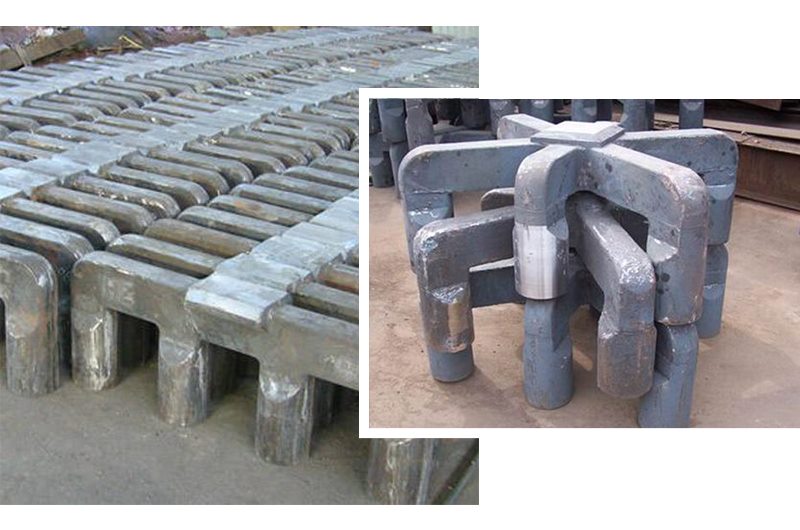The anode steel yoke is an indispensable device in the anode guide rod in the process of electrolytic aluminum production, and it plays the role of connecting the top and the bottom. consumables.
Models of anode steel yoke: Generally, there are three parallel claws, four claws, three-dimensional four claws, six claws, eight claws, and double anode steel claws.
The use of Aluminum Electrolyzer Anode Steel Yoke
The anode steel yoke is a consumable in the electrolytic aluminum production process, and its consumption degree and replacement frequency are generally based on the production limit of the electrolytic workshop. The transfer of the anode assembly is only available when the busbar is lifted and the anode is replaced. Generally, when the anode carbon block is consumed to 15~18 days, the busbar needs to be lifted once and the anode assembly needs to be adjusted once.
The consumption of the anode carbon block is about 30 days. At this time, the anode needs to be replaced. Every time the anode is replaced, the anode steel claws are consumed. Replace half once. Sometimes it depends on the specific consumption level, which is the anode steel claw.

The production process of Aluminum Electrolyzer Anode Steel Yoke
One of the main functions of the anode steel yoke for aluminum electrolysis in the aluminum electrolysis production process is to conduct electricity. The anode steel claw is cast steel and needs to be connected to the aluminum guide rod through a steel-aluminum explosive welding block. The specific connection structure is: the upper part of the anode steel claw The welding bevel is welded with the steel plate of the steel-aluminum explosive welding block, and the aluminum guide rod welding bevel is welded with the aluminum plate of the steel-aluminum explosive welding block.
During the normal production process of the electrolytic cell, the temperature of the anode carbon block group rises after being placed in the electrolytic cell, and the final temperature of the steel claw and the carbon block reaches 400°C and 900°C, respectively. The coefficient is about 4 times larger, so the expansion of the steel claws is larger than that of the anode carbon block, which causes the anode carbon block carbon bowl to deform. The stress generated by the deformation is greater than the allowable stress of the carbon block, which causes the anode carbon block to crack or even break.
Technical requirements of Aluminum Electrolyzer Anode Steel Yoke:
1. Material according to user needs
2. The surface is smooth, the interior is tight, and there are no defects such as blisters, slag inclusions, cracks, pores, shrinkage porosity, etc.
3. The size of the steel claw can be produced according to the drawings.
The technical standard of Aluminum Electrolyzer Anode Steel Yoke:
1. GB/T11352-1989 Cast carbon steel for general engineering
2. GB/T5613-1995 Representation method of cast steel grades
3. GB/T6414-1999 Dimensional tolerance and machining allowance of castings










